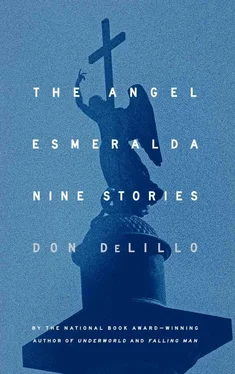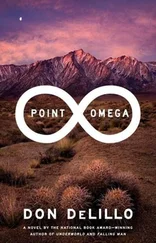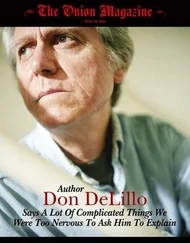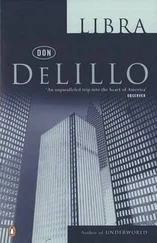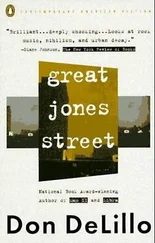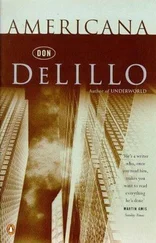“Major money,” he said. “Unless you’re a member.”
“I’m not a member.”
“Then you teach art.”
“I don’t teach art.”
“You want me to shut up. Shut up, Bob. Only my name’s not Bob.”
In the painting of the coffins being carried through a large crowd, she didn’t know they were coffins at first. It took her a long moment to see the crowd itself. There was the crowd, mostly an ashy blur with a few figures in the center-right foreground discernible as individuals standing with their backs to the viewer, and then there was a break near the top of the canvas, a pale strip of earth or roadway, and then another mass of people or trees, and it took some time to understand that the three whitish objects near the center of the picture were coffins being carried through the crowd or simply propped on biers.
Here were the bodies of Andreas Baader, Gudrun Ensslin and a man whose name she could not recall. He had been shot in his cell. Baader had also been shot. Gudrun had been hanged.
She knew that this had happened about a year and a half after Ulrike. Ulrike dead in May, she knew, of 1976.
Two men entered the gallery, followed by a woman with a cane. All three stood before the display of explanatory material, reading.
The painting of the coffins had something else that wasn’t easy to find. She hadn’t found it until the second day, yesterday, and it was striking once she’d found it, and inescapable now — an object at the top of the painting, just left of center, a tree perhaps, in the rough shape of a cross.
She went closer to the painting, hearing the woman with the cane move toward the opposite wall.
She knew that these paintings were based on photographs but she hadn’t seen them and didn’t know whether there was a bare tree, a dead tree beyond the cemetery, in one of the photos, that consisted of a spindly trunk with a single branch remaining, or two branches forming a transverse piece near the top of the trunk.
He was standing next to her now, the man she’d been talking to.
“Tell me what you see. Honestly, I want to know.”
A group entered, led by a guide, and she turned for a moment, watching them collect at the first painting in the cycle, the portrait of Ulrike as a much younger woman, a girl, really, distant and wistful, her hand and face half floating in the somber dark around her.
“I realize now that the first day I was only barely looking. I thought I was looking but I was only getting a bare inkling of what’s in these paintings. I’m only just starting to look.”
They stood looking, together, at the coffins and trees and crowd. The tour guide began speaking to her group.
“And what do you feel when you look?” he said.
“I don’t know. It’s complicated.”
“Because I don’t feel anything.”
“I think I feel helpless. These paintings make me feel how helpless a person can be.”
“Is that why you’re here three straight days? To feel helpless?” he said.
“I’m here because I love the paintings. More and more. At first I was confused, and still am, a little. But I know I love the paintings now.”
It was a cross. She saw it as a cross and it made her feel, right or wrong, that there was an element of forgiveness in the picture, that the two men and the woman, terrorists, and Ulrike before them, terrorist, were not beyond forgiveness.
But she didn’t point out the cross to the man standing next to her. That was not what she wanted, a discussion on the subject. She didn’t think she was imagining a cross, seeing a cross in some free strokes of paint, but she didn’t want to hear someone raise elementary doubts.
They went to a snack bar and sat on stools arranged along a narrow counter that measured the length of the front window. She watched the crowds on Seventh Avenue, half the world rushing by, and barely tasted what she ate.
“I missed the first-day pop,” he said, “where the stock soars like mythically, four hundred percent in a couple of hours. I got there for the aftermarket, which turned out to be weak, then weaker.”
When the stools were all occupied, people stood and ate. She wanted to go home and check her phone messages.
“I make appointments now. I shave, I smile. My life is living hell,” he said, blandly, chewing as he spoke.
He took up space, a tall broad man with a looseness about him, something offhand and shambling. Someone reached past her to snag a napkin from the dispenser. She had no idea what she was doing here, talking to this man.
He said, “No color. No meaning.”
“What they did had meaning. It was wrong but it wasn’t blind and empty. I think the painter’s searching for this. And how did it end the way it did? I think he’s asking this. Everybody dead.”
“How else could it end? Tell the truth,” he said. “You teach art to handicapped children.”
She didn’t know whether this was interesting or cruel but saw herself in the window wearing a grudging smile.
“I don’t teach art.”
“This is fast food that I’m trying to eat slow. I don’t have an appointment until three-thirty. Eat slow. And tell me what you teach.”
“I don’t teach.”
She didn’t tell him that she was also out of work. She’d grown tired of describing her job, administrative, with an educational publisher, so why make the effort, she thought, now that the job and the company no longer existed.
“Problem is, it’s against my nature to eat slow. I have to remind myself. But even then I can’t make the adjustment.”
But that wasn’t the reason. She didn’t tell him that she was out of work because it would give them a situation in common. She didn’t want that, an inflection of mutual sympathy, a comradeship. Let the tone stay scattered.
She drank her apple juice and looked at the crowds moving past, at faces that seemed completely knowable for half a second or so, then were forgotten forever in far less time than that.
He said, “We should have gone to a real restaurant. It’s hard to talk here. You’re not comfortable.”
“No, this is fine. I’m kind of in a rush right now.”
He seemed to consider this and then reject it, undiscouraged. She thought of going to the washroom and then thought no. She thought of the dead man’s shirt, Andreas Baader’s shirt, dirtier or more bloody in one picture than in the other.
“And you have a three o’clock,” she said.
“Three-thirty. But that’s a long way off. That’s another world, where I fix my tie and walk in and tell them who I am.” He paused a moment, then looked at her. “You’re supposed to say, ‘Who are you?’”
She saw herself smile. But she said nothing. She thought that maybe Ulrike’s rope burn wasn’t a burn but the rope itself, if it was a rope and not a wire or a belt or something else.
He said, “That’s your line. ‘Who are you?’ I set you up beautifully and you totally miss your cue.”
They’d finished eating but their paper cups were not empty yet. They talked about rents and leases, parts of town. She didn’t want to tell him where she lived. She lived just three blocks away, in a faded brick building whose limitations and malfunctions she’d come to understand as the texture of her life, to be distinguished from a normal day’s complaints.
Then she told him. They were talking about places to run and bike, and he told her where he lived and what his jogging route was, and she said that her bike had been stolen from the basement of her building, and when he asked her where she lived she told him, more or less nonchalantly, and he drank his diet soda and looked out the window, or into it, perhaps, at their faint reflections paired on the glass.
When she came out of the bathroom, he was standing at the kitchen window as if waiting for a view to materialize. There was nothing out there but dusty masonry and glass, the rear of the industrial loft building on the next street.
Читать дальше
